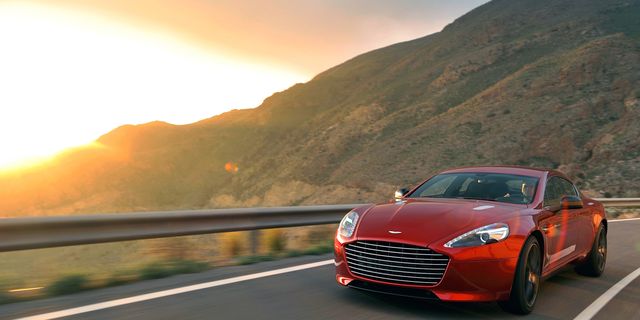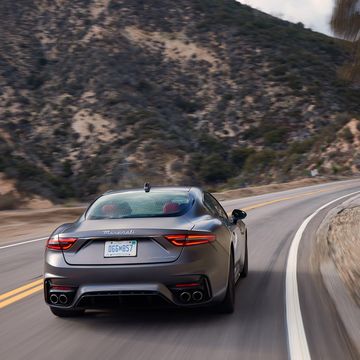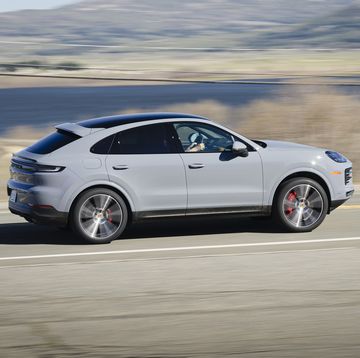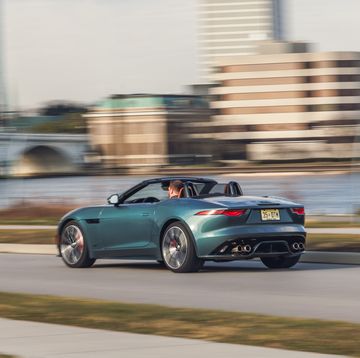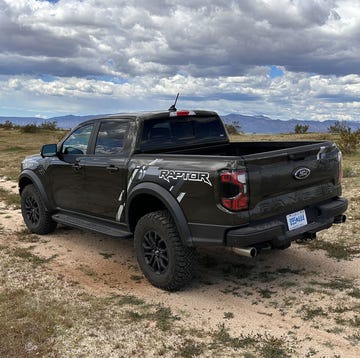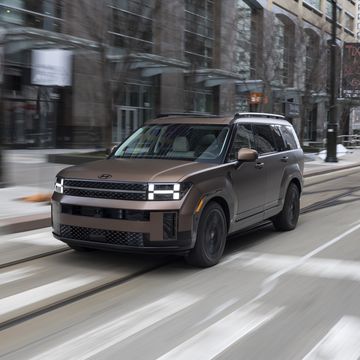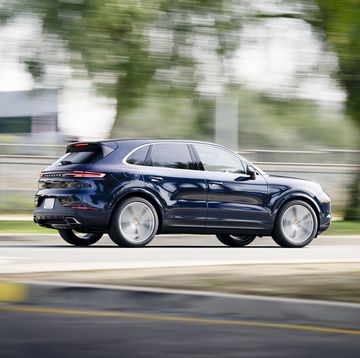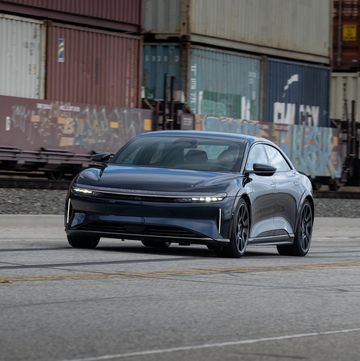Fall through the looking glass, pass through the wardrobe, hit all the buttons in the Wonkavator, or take the Hogwarts Express one stop past the wizard school and there’s Aston Martin’s updated, five-door Rapide S sports car. It’s engineered for an alternate reality where up is left, down is sideways, rabbits wear top hats, and four-door exotic sports cars are the norm.
It’s an inverted universe where practicality is a burden, beauty always trumps convenience, and a 550-hp 5.9-liter V-12 is considered reasonable and ordinary. The car is a pain in the ass, and wonderful for it.
First seen as a concept back in 2006, the Rapide is an uncompromised sculpture. It’s a dramatic sliver of a car, with a windshield so brutally raked that it’s impossible to see some overhead traffic lights from the driver’s seat, and a fastback roof that would have even Bilbo Baggins ducking to get in through the rear doors. But when it entered production back in 2010 and promptly became sales-proof, the big complaint was that it wasn’t quick enough. In Narnia, 470 horsepower may seem like a lot, but in Car and Driver’s world, that left the regular old Rapide behind muggle-spec competitors like the bulbous Porsche Panamera Turbo S. And Aston’s claimed 5.0-second zero-to-60-mph performance? Nowadays, five seconds is enough time to conquer Middle-earth.
So Aston has rewritten the Rapide fable with the version of the company’s latest AM11 V-12 that debuted in the new Vanquish. The revised block is stuffed with a new crank and capped by new cylinder heads with variable timing on both the intake and exhaust cams and a new “big wing” intake manifold breathing in through 0.2-inch-larger throttle bodies. The re-machined combustion chambers flow better with a slightly increased compression ratio. All that thumps output up to 550 horsepower at a screaming 6750 rpm and 457 pound-feet of peak torque at 5000 rpm with, Aston asserts, significantly better torque production below 4000 rpm. There are no turbos, no superchargers, and no dark arts involved.
To deal with European pedestrian-protection standards, Aston has mounted the engine 0.8 inch lower in its bay while redesigning the front grille and hood. Throw in LED lighting and 20-inch wheels inside 245/35ZR-20 front and 295/30ZR-20 rear Bridgestone tires, and this is a car that visually punches its own Golden Ticket. That noted, what remains virtually unchanged is Aston’s glue- and rivet-bonded aluminum space-frame architecture, and the rear-mounted six-speed automatic transaxle.
Though the Rapide S has a long, 117.7-inch wheelbase—8.4 inches longer than a Honda Accord sedan’s—the door openings are puny and the roof very low. It’s easier to get onto King’s Cross Platform 9 3/4 bound for Hogwarts than it is to enter the Rapide with one’s dignity intact. It’s an ergonomic wonderland in there, too, with seatbelt anchors sunk down into the seats, seat-adjustment controls mounted on the center tunnel, and narrow footwells. And it’s nearly impossible to see out the back.
Specifications

John Pearley Huffman has been writing about cars since 1990 and is getting okay at it. Besides Car and Driver, his work has appeared in the New York Times and more than 100 automotive publications and websites. A graduate of UC Santa Barbara, he still lives near that campus with his wife and two children. He owns a pair of Toyota Tundras and two Siberian huskies. He used to have a Nova and a Camaro.
